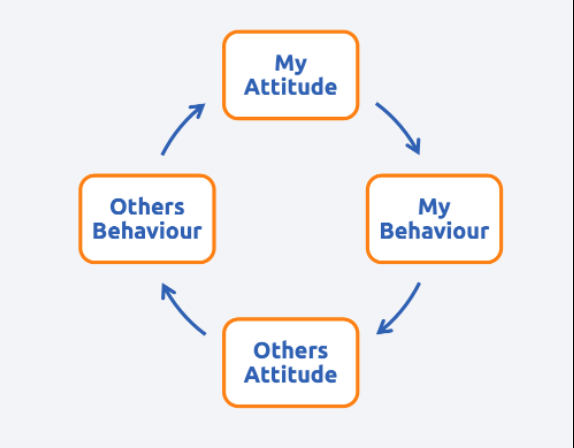The Importance of Communication Skills in Self-Defence
How to communicate with an aggressive person
Introduction
When people see self defence on social media they usually see a smaller person, usually a woman, using their superior skills to defeat a much stronger bigger opponent. Not only does this give people an unrealistic sense of what self defence is but also makes people believe that the only thing that matters in self defence are the physical skills.
The true power of self defence is avoidance by using awareness and communication skills. This because clear communication can prevent a situation from developing into violence and forcing the use of the physical skills of self defence. In this article will explore verbal and non-verbal communication, de-escalation, and understanding aggression triggers.
Understanding Conflict: Finding Common Ground
Conflict often arises from misunderstandings, fear, ego, or external pressures. Understanding why a person is being aggressive and being able to relate to that person is incredibly important skill to master so you can deescalate a self defence situation before it escalates and turns physical.
In it also important to understand the individual, where do they come from, are they mentally unwell for example In some cultures, a loud voice is not necessarily aggressive, whereas in British culture, it often is—understanding this helps in de-escalation.
Identifying Triggers: Why Is This Happening?
Understanding the motivation behind aggression can help you react appropriately. Recognizing common triggers is important for effective self defence and conflict resolution.
Common Triggers of Aggression:
Ego: Individuals may react aggressively when they feel disrespected or feel the need to 'win' a confrontation. This could stem from a challenge to their self-esteem or social standing.
Fear: Defensive aggression often arises when a person feels threatened. In such situations, the instinct to protect oneself can lead to aggressive behavior.
Peer Pressure: Some may act tough or aggressive to maintain status within a group, conforming to perceived social norms or expectations.
Loss of Face: People might react aggressively to save their dignity or pride, especially in public settings where they feel their reputation is at stake.
Clear Criminal Intent: Aggression can also manifest through actions driven by criminal motives, such as assault, robbery, or drug-related activities.
Stress: Personal or work-related stress can cause individuals to overreact, leading to aggressive outbursts that may not correlate with the actual situation at hand.
Understanding these triggers can provide insight into aggressive behavior, allowing for more informed reactions and strategies in managing conflict.
Non-Verbal Communication: Understanding body language
Your body language can help calm an aggressor. Staying calm and confident without being shy or aggressive is important for deescalation.
You can also observe the aggressors body language to gauge their emotional state and potential actions. These can include warning signs such, clenched fists, pacing, excessive eye contact, sudden movement, reaching into pockets, glancing around (looking for exits or witnesses).
It is important to train yourself to learn to recognize these warning signs so you can utilize the correct tactics to the situation.
Verbal Communication: De-Escalation Through Words
It is important to say that you can only deescalate social violence through communication, criminal violence requires different set of verbal skills. You can read more about this in this the linked article The Power of Words: How to Use Verbal Skills for Self-Defence.
There are some key things to do when trying to deescalate social violence:
Tone of voice matters – Stay calm and assertive.
Listen and acknowledge – Show you’re paying attention, sometimes that’s enough to defuse a situation.
Choose your words wisely – Avoid inflammatory language, focus on solutions rather than arguments.
Give them a way out – Let them ‘win’ without losing face.
The Betari’s Box: Controlling Yourself First
Control yourself first
The first stage in deescalation is to deescalate yourself. We cannot de-escalate others if we are emotionally charged ourselves.
The concept of the Betari’s box states that your attitude shapes your behavior which in effect affects others attitude and behavior.
Being able to change your attitude and therefore manage your behaviors can affect the aggressors behaviors and create a positive cycle where you can deescalate the self defence situation.
Conclusion
Self defence is often perceived as a physical confrontation, but it encompasses much more than just fighting. Effective communication skills serve as one of the most powerful tools in self defence. The ability to articulate your thoughts, express your feelings, and read the emotions of others can often diffuse a potential threat before it escalates.
Practicing situational awareness is crucial; understanding your surroundings and recognizing potential dangers can help you avoid conflicts altogether. Learning de-escalation techniques, such as active listening and using calm language, equips you with the tools to manage tense situations without resorting to violence.
Want to learn practical self-defence skills, including de-escalation? Join our classes today.


